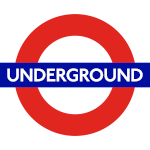Birthday of the London Underground Date in the current year: January 10, 2026
 The birthday of the London Underground is celebrated on January 10. On this day in 1863, the Metropolitan Railway opened, becoming the world’s first underground railway.
The birthday of the London Underground is celebrated on January 10. On this day in 1863, the Metropolitan Railway opened, becoming the world’s first underground railway.Today, rapid transit systems are common in urban areas around the world, but their history isn’t even two hundred years old yet. The world’s first rapid transit system, London’s Metropolitan Railway, was opened in the mid-19th century.
The population and physical extent of London grew significantly in the first half of the 19th century: from approximately one million people living in what is now Greater London in 1801 to double that number in 1851. This resulted in a high level of traffic congestion due to people traveling each day to the City of London for work. The idea of building an underground railway linking the City of London with seven railway stations was first proposed in the 1830s, and the permission to build such a railway was granted to Metropolitan Railway in 1854.
Construction of the first line from Paddington to King’s Cross began in March 1860. Trial runs began in November 1861, and the first trial trip over the whole line from Paddington to Farrington took place in May 1862. Among the guests was the chancellor of the Exchequer and future Prime Minister William Gladstone. The railway had its official opening on January 10, 1863. It used wooden carriages hauled by steam locomotives.
The Metropolitan Railway was extended soon after opening, and a new underground railway called the District Railway was opened in 1868. The two railways eventually completed the Inner Circle of lines connecting the city’s railway stations. The first successful deep-level underground railway line was the City and South London Railway, which opened in 1890.
The electrification of London’s underground railways began in 1902, when American financier Charles Yerkes established the Underground Electric Railways Company of London (UERL) that took control over the District Railway and a number of other underground railway companies. By 1913, only the Metropolitan Railway and its subsidiaries remained outside the UERL’s control. The companies had an agreement that included joint publicity and maps.
The London Underground as we know it today emerged in 1933, when the newly established London Passenger Transport Board took over most of the city’s underground railways, bus and tramway services. Today, the London Underground is operated by London Underground Limited, a subsidiary of Transport for London.
The London Underground, colloquially referred to as the Tube, serves Greater London and some adjacent parts of Buckinghamshire, Essex, and Hertfordshire. As of 2021, it had eleven lines and 272 stations, including 16 stations outside Greater London. The total length of the Tube’s lines is 402 kilometers, making it one of the world’s longest underground systems. Like most subway systems in the world, it doesn’t make a profit, but passenger fares cover more than 90% of the London Underground’s operational expenditure, which is a quite a good number.
- Category
- Unofficial Holidays
- Country
- United Kingdom
- Tags
- London Underground, Metropolitan Railway, observances in the UK, unofficial holidays, birthday of the London Underground